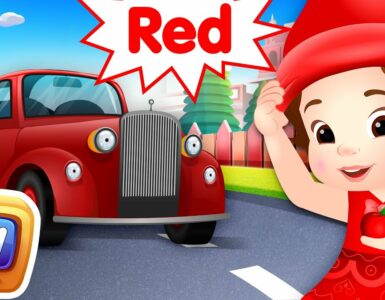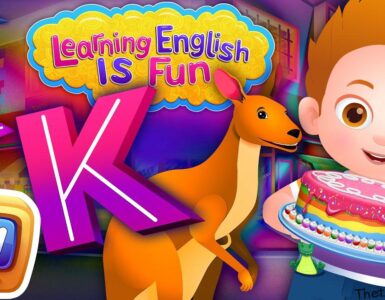The Colors Song BLUE ChuChu TV is an enchanting children’s song that introduces young learners to the vibrant world of colors. Through catchy tunes and playful animations, this educational song captivates children while helping them understand different colors in a fun and engaging way. In today’s world, where multimedia learning tools are becoming essential, the value of songs like this cannot be overstated, as they foster early childhood learning and creativity.
The Importance of Color Recognition in Early Childhood Education
Understanding colors is foundational for children’s cognitive development. As children learn to recognize and name colors, they begin to articulate their thoughts and observations about the world around them. This section explores the significance of color recognition in early childhood education.
Cognitive Development through Color Recognition
Color recognition plays a crucial role in enhancing children’s cognitive abilities. It nurtures observational skills, improves attention spans, and promotes language development.
Through interactive activities involving colors, children can develop critical thinking and problem-solving skills. For instance, when a child differentiates between red and blue objects, they not only learn the names of these colors but also start to categorize and compare objects. This process enhances their understanding of the world as they engage with their environment.
Additionally, recognizing colors can aid in memory retention. When children associate specific colors with objects, they create mental images that help them recall information more effectively. Thus, incorporating colorful learning materials, such as The Colors Song BLUE ChuChu TV, becomes essential in stimulating children’s minds.
More: The Bird Song Adventure ABC Kid TV
Emotional Growth and Expression through Colors
Colors also have profound effects on emotions and creativity. Each color can evoke specific feelings—blue may bring calmness, while yellow can inspire happiness. By teaching children about colors, educators and parents can help them explore their emotions and express themselves creatively.
As children interact with colors, they learn to associate their feelings with various hues. For example, they might feel joyful when looking at bright colors or serene when surrounded by pastels. Engaging in creative activities like painting or drawing with colors encourages self-expression and emotional exploration, allowing children to communicate what words sometimes cannot convey.
Furthermore, understanding colors helps children navigate social interactions. They learn to identify and express their preferences, negotiate with peers, and even share their feelings associated with certain colors. Hence, the emotional aspect of color recognition is just as vital as the cognitive one.
Enhancing Language Skills through Color Learning
Language development goes hand-in-hand with color recognition. When children learn to name colors, they expand their vocabulary and improve their communication skills. Songs like The Colors Song BLUE ChuChu TV offer a rhythmic approach to learning colors, making it easier for children to remember and pronounce them correctly.
By integrating colors into everyday conversations, parents and educators can reinforce this knowledge. For instance, pointing out the colors of objects during playtime or storytelling helps embed these learning experiences deeply in their minds. Creating exciting dialogues around colors not only boosts vocabulary but also fosters meaningful interactions, laying a strong foundation for effective communication.
Moreover, singing catchy songs reinforces memory and retention. Children often memorize lyrics easily, and songs become a fun way for them to learn. The repetitive nature of The Colors Song BLUE ChuChu TV enhances their ability to grasp the concept of colors while enjoying the music, making it an enjoyable learning tool.
The Role of Multimedia in Children’s Learning
In today’s digital age, multimedia resources play a pivotal role in enhancing children’s learning experiences. Incorporating videos, animations, and songs into educational content has proven to be an effective strategy for engaging young minds.
Captivating Attention with Animation
Animation is a powerful tool that captures children’s attention. Bright colors, moving images, and engaging characters create a visually stimulating environment that encourages active learning.
For instance, the animation style used in The Colors Song BLUE ChuChu TV is designed to be appealing to children. Characters are colorful and expressive, which keeps children interested and entertained. This visual engagement is vital for maintaining focus, particularly for toddlers and preschoolers who may struggle with traditional forms of learning.
Moreover, animated characters often embody attributes that children find relatable. As they see these characters exploring colors, they may feel inspired to join in the learning process. The sense of connection formed through animation fosters imagination, encouraging children to explore beyond the confines of the screen.
Interactive Learning Experiences through Videos
Videos provide opportunities for interactive learning that static books cannot. Children can watch how colors interact, see real-life applications, and observe the beauty of the world around them.
The Colors Song BLUE ChuChu TV uses interactive elements that invite children to participate actively. Singing along, dancing, and mimicking characters lead to kinesthetic learning. When children move their bodies to the rhythm of the song, they solidify their understanding of colors while developing motor skills.
Furthermore, interactive videos encourage discussions among peers and caregivers. Watching together creates moments for dialogue where parents can ask questions and prompt children to express their thoughts. This collaborative viewing experience strengthens bonds and enriches learning, creating a deeper understanding of the subject matter.
Fostering Creativity through Digital Content
Digital content opens doors for creativity in ways that traditional methods cannot. With platforms like YouTube and educational apps, children can explore their artistic sides by utilizing various colors and learning techniques.
The Colors Song BLUE ChuChu TV sets the stage for creativity by introducing children to diverse colors. Following the song, caregivers can engage children in art projects where they can experiment with colors, paint, and draw. Activities like coloring worksheets complement the song’s themes and give children an outlet for their imaginations.
Additionally, technology enables children to create their own color-themed content. Using apps that allow them to design or animate can further enhance their learning experience. Such creative pursuits equip children with valuable skills and instill a sense of accomplishment when they see their work come to life.
The Impact of Parental Involvement in Color Learning
Parental involvement is pivotal to children’s learning, especially in early childhood education. When parents actively engage in their children’s learning processes, it leads to better outcomes in terms of knowledge retention and emotional growth.
Encouraging Playful Learning at Home
Parents can create a colorful learning environment at home by incorporating play into educational experiences. Simple activities like sorting colored blocks, playing with crayons, or even cooking colorful meals can make learning enjoyable and memorable.
Using The Colors Song BLUE ChuChu TV as a backdrop, parents can initiate fun games that involve identifying colors in everyday life. For example, they can go on a color scavenger hunt around the house or the neighborhood, encouraging children to find objects that match the colors from the song. This approach reinforces color recognition while fostering family bonding.
Moreover, playful learning nurtures a positive attitude towards education. When learning feels like a game, children are more likely to embrace new concepts without fear or anxiety. This intrinsic motivation sparks a lifelong love for learning.
Discussing Colors in Everyday Life
Engaging children in discussions about colors during daily routines enhances their understanding. Conversations can take place while dressing, shopping, or even while reading books together.
Parents can point out colors in clothing and ask children to describe their favorites. At the grocery store, parents can encourage children to identify the colors of fruits and vegetables. This practice not only reinforces learning but also integrates it into real-life scenarios, making it relevant and meaningful.
Furthermore, discussing colors creates a platform for children to express their opinions and preferences. As they voice what they like or dislike about specific colors, they develop confidence in their viewpoints and improve their verbal skills.
Collaborating with Educators for Enhanced Learning
Building a partnership with educators extends children’s learning experiences beyond the home environment. Parents can collaborate with teachers to ensure consistency in teaching approaches, especially regarding color recognition.
Participating in school activities related to colors can strengthen the bond between home and school. Whether attending art classes or community events that celebrate colors, parental involvement enhances children’s engagement with educational content.
Additionally, parents can seek feedback from educators regarding their child’s learning progress. Understanding where children excel and where they may need additional support allows parents to tailor activities at home, reinforcing classroom learning and creating a cohesive educational framework.
The Power of Music in Early Learning
Music is a universal language that transcends cultural barriers and resonates with people of all ages. In early childhood education, music serves as an invaluable tool for fostering learning, creativity, and social connections.
Enhancing Memory Retention through Musical Learning
One of the foremost benefits of using music in education is its ability to enhance memory retention. Melodic patterns combined with lyrics create an environment conducive to learning. Children are more likely to remember information presented in a musical format compared to conventional teaching methods.
The Colors Song BLUE ChuChu TV exemplifies this concept beautifully. The rhythmic nature of the song, paired with engaging visuals, makes it easy for children to absorb information about colors quickly. When children sing along, their brains encode the information, leading to better recall in the future.
Moreover, repetition in music aids learning. The more children listen to the song, the more ingrained the concepts become in their minds. This method of reinforcement is particularly beneficial in early childhood education, where frequent repetition helps solidify learning.
Fostering Social Skills through Group Singing
Singing together fosters social connections and teamwork among children. Group activities centered around music create a sense of belonging and enhance interpersonal skills.
When children sing The Colors Song BLUE ChuChu TV in a group setting, they learn to cooperate and harmonize with others. This experience promotes listening skills as they pay attention to each other’s voices and follow the rhythm. Developing these social skills at a young age paves the way for better relationships in their future.
Additionally, group singing can build empathy and appreciation for cultural diversity. Music has the power to unite individuals from various backgrounds, allowing children to share their unique experiences and perceptions of colors, enriching their understanding of the world.
Unlocking Creativity and Imagination through Musical Play
Music encourages children to explore their creativity and imagination. Engaging with songs provides them with a canvas to express themselves and experiment with different ideas.
After watching The Colors Song BLUE ChuChu TV, children can participate in activities that blend music and art. They could create their own color songs or dance routines based on what they learned from the song. Such creative endeavors deepen their learning experience, allowing them to think outside the box.
Furthermore, music stimulates brain development as children learn to associate sounds with colors and emotions. This exploration of the auditory world fosters holistic learning experiences that contribute to well-rounded development.
Conclusion
The Colors Song BLUE ChuChu TV stands as a testament to the power of music and multimedia in early childhood education. By incorporating engaging songs, animations, and interactive elements, it captivates young learners, promoting color recognition while nurturing cognitive, emotional, and social skills.
Parents and educators alike play vital roles in maximizing the impact of colorful learning experiences. By fostering playful learning at home, encouraging discussions about colors, collaborating with educators, and embracing the role of music, we can create a rich tapestry of educational experiences for children.
As the world continues to evolve, adapting our teaching strategies to include vibrant and interactive resources will be paramount. The Colors Song BLUE ChuChu TV is not just a song; it is a gateway to a world of imagination, creativity, and learning—a world where every color tells a story waiting to be explored.

















